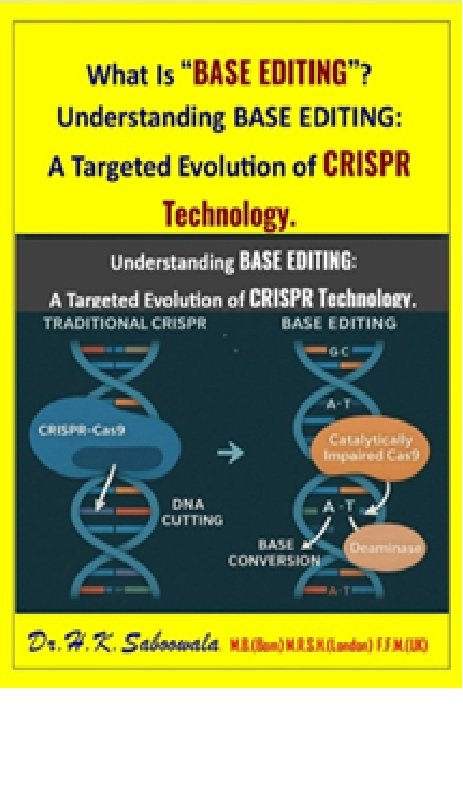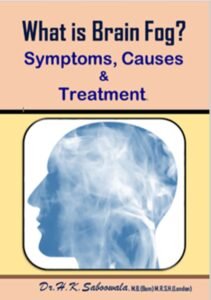Understanding BASE EDITING: A Targeted Evolution of CRISPR Technology.
For Medical Professionals, Researchers and Curious Minds
A Brief Introduction.
- Base editing is emerging as one of the most precise and revolutionary gene-editing technologies of our time.
Unlike conventional CRISPR, which cuts both strands of DNA, base editing rewrites individual DNA letters—without breaking the DNA chain.
This makes the process not only more accurate but also significantly safer.
Brief History of Base Editing
Base editing emerged in 2016 as a refined version of CRISPR technology. Unlike CRISPR-Cas9, which cuts DNA strands, base editors make precise changes by converting one DNA base to another — such as changing a C to T or an A to G — without causing double-strand breaks. This breakthrough minimized off-target effects and improved gene-editing safety.
Types of Base Editors
There are two main types:
- Cytosine Base Editors (CBEs): Convert C→T
- Adenine Base Editors (ABEs): Convert A→G
These editors are fused with deaminase enzymes and a mutated Cas protein, allowing targeted edits at specific genomic sites.
Current & Emerging Applications
Base editing holds promise for treating genetic disorders like sickle cell disease, Tay-Sachs, and progeria.
It is also being explored in agriculture to create pest-resistant or climate-tolerant crops. Unlike traditional CRISPR, base editing avoids large DNA deletions, making it ideal for delicate genomic changes. Ongoing clinical trials are testing its safety and efficiency in vivo.
Ethical and Regulatory Notes
While base editing is more precise, ethical concerns remain. Issues around human germline modification, long-term effects, and accessibility must be addressed. Regulatory bodies like the FDA and EMA are currently evaluating its therapeutic use in trials.
What Makes Base Editing So Unique?
At its core, base editing is a refined version of CRISPR.
It uses engineered enzymes to convert one DNA base into another—such as changing an A to a G—without causing double-strand breaks.
This subtle correction can directly repair genetic mutations at their origin.
This level of precision opens the door to treating a wide range of inherited diseases, with fewer unintended consequences compared to earlier genome-editing methods.
Why It Matters in Modern Medicine
Early studies and trials have already shown encouraging results.
Scientists are exploring base editing for conditions like:
- Sickle cell disease
- Genetic blindness
- Liver disorders
- Rare metabolic diseases
Because it doesn’t involve DNA cuts, base editing reduces the risks of chromosomal damage, making it a safer alternative for future gene therapies.
Explore More in the eBook
The accompanying eBook dives deeper into:
- How base editing works
- Different base editors and their tools
- Breakthroughs and clinical applications
- Medical potential and future perspectives
Rich, full-colour illustrations throughout the book simplify complex mechanisms and enhance comprehension for both medical professionals and curious learners.
This informative eBook -A Must-Read for:
- Genetic researchers
- Clinicians exploring gene therapy
- Readers curious about cutting-edge biomedical science
- Discover why base editing is being hailed as the most PRECISE genetic tool ever developed.
Explore this breakthrough in depth.

Download the Full eBook
Available now at https://drhakimemedivault.com

QR code for “More Books “Link.
Medical Review.
Base editing is one of the most exciting breakthroughs in modern medicine. It allows scientists to fix tiny mistakes in our DNA—without cutting it—by changing just one letter at a time. This makes treatments much safer and more accurate, especially for inherited diseases. As a doctor, I believe base editing could completely change how we treat genetic conditions in the near future.”
— Dr. Anuja Mehta, M.D., Clinical Geneticist & Molecular Medicine Consultant
Thank You Note
A heartfelt thank you to all readers — including neurologists, researchers, students, and inquisitive minds — who continue to support this series of educational medical reviews. Your encouragement drives the mission to make complex science both understandable and clinically relevant.
–Dr. H. K. Saboowala
M.B.(Bom), M.R.S.H.(London), F.F.M.(UK)




